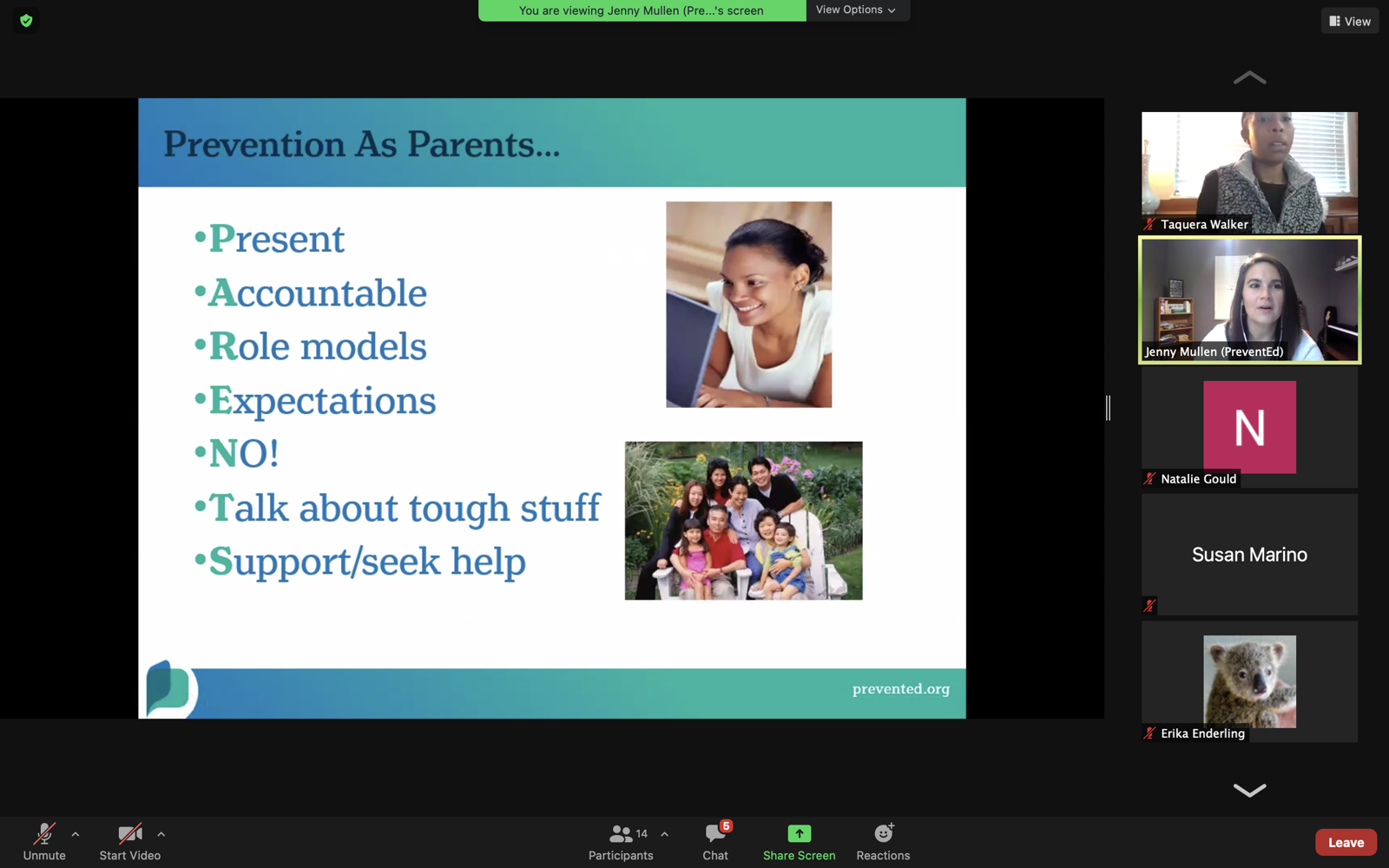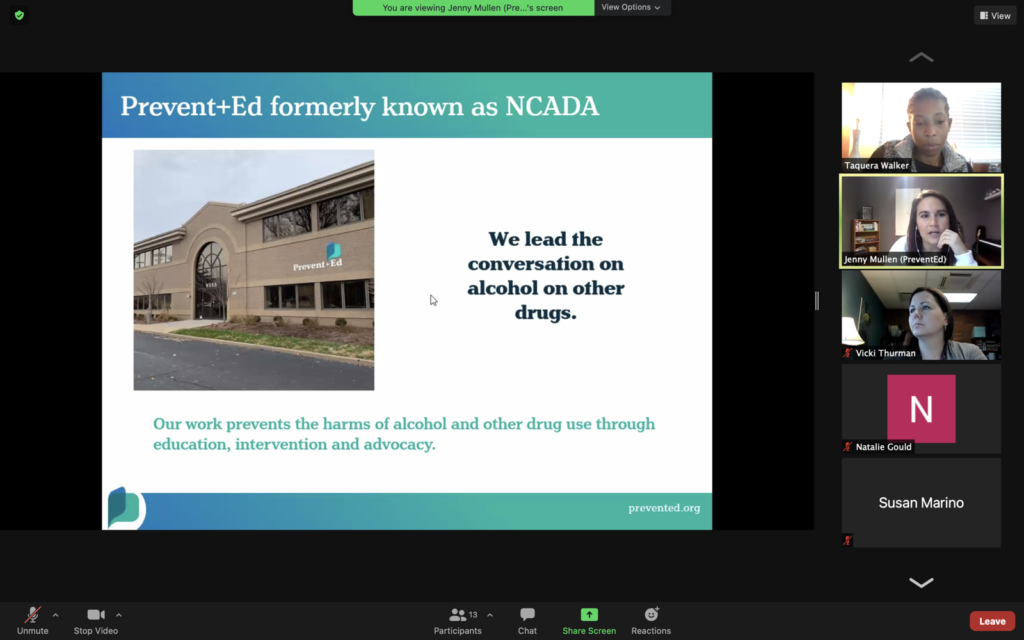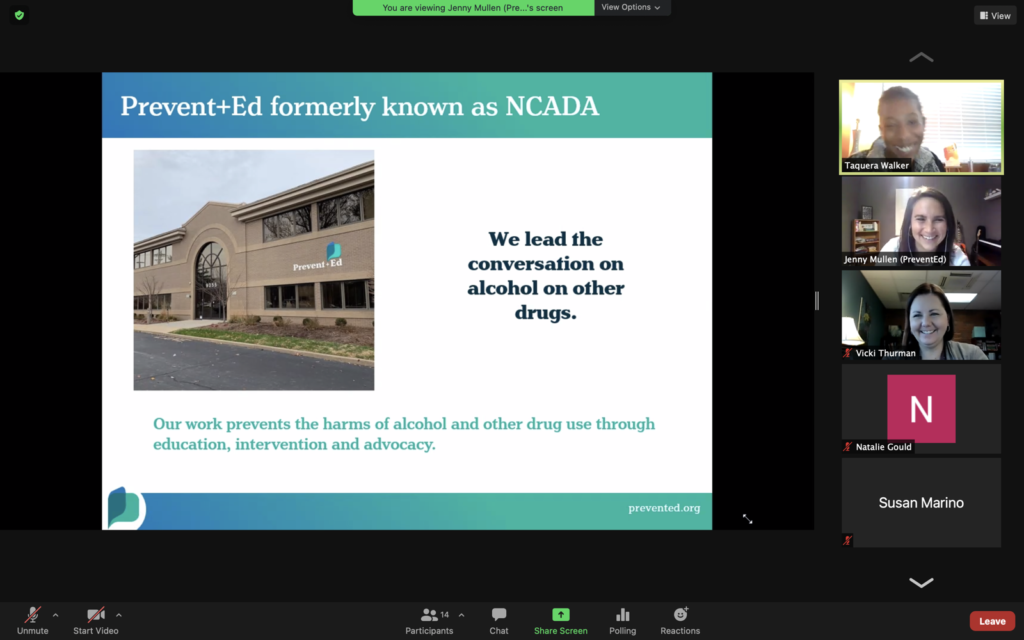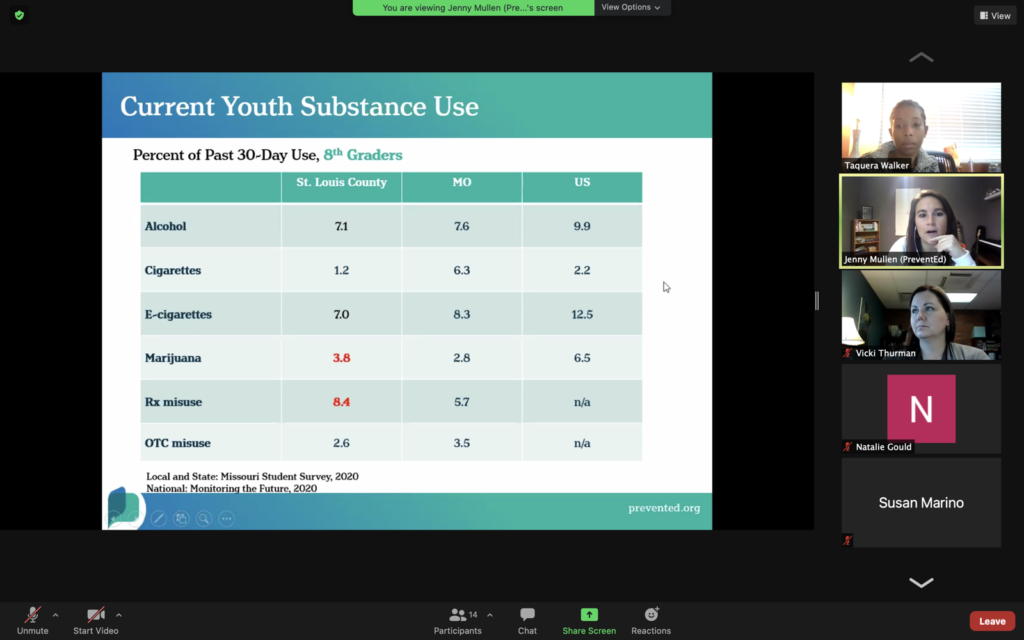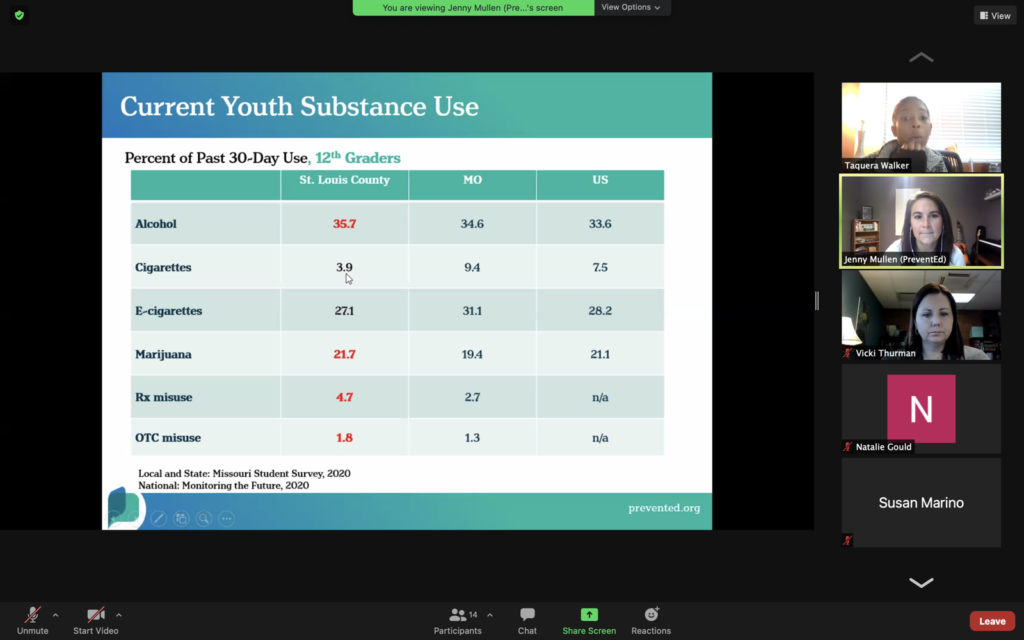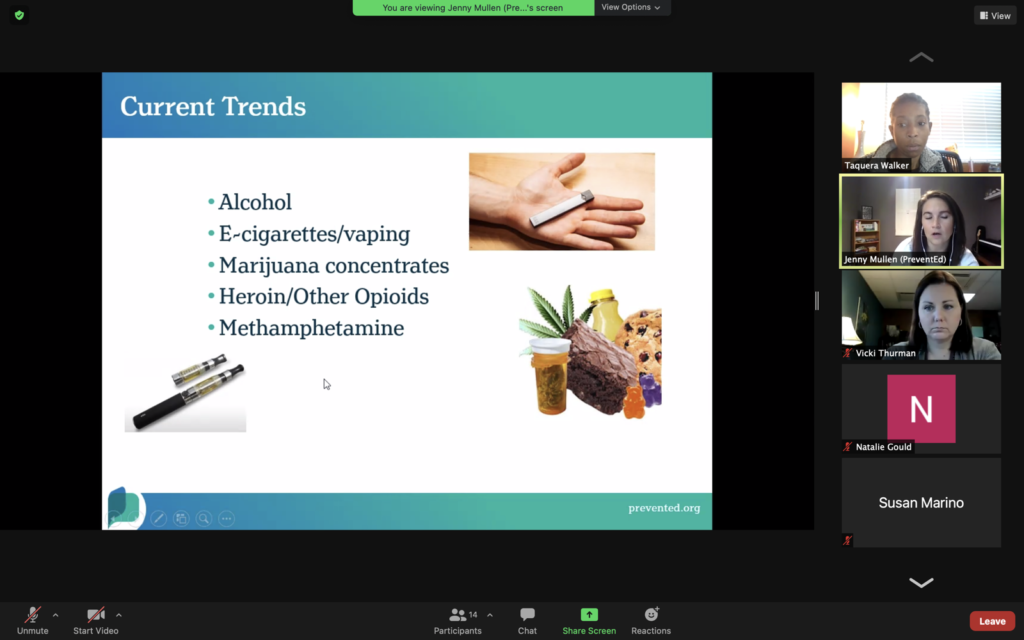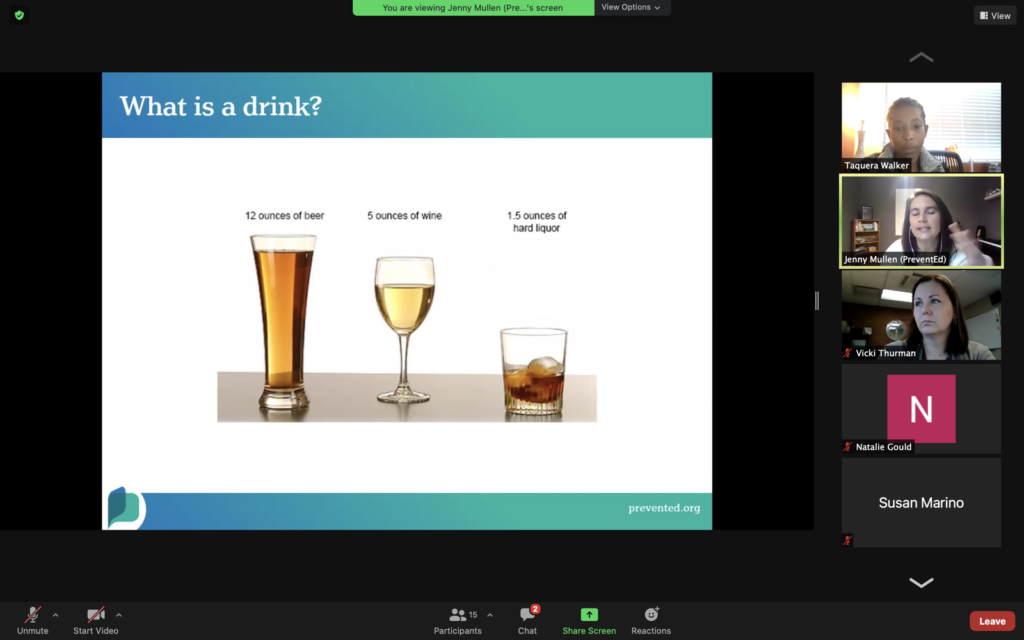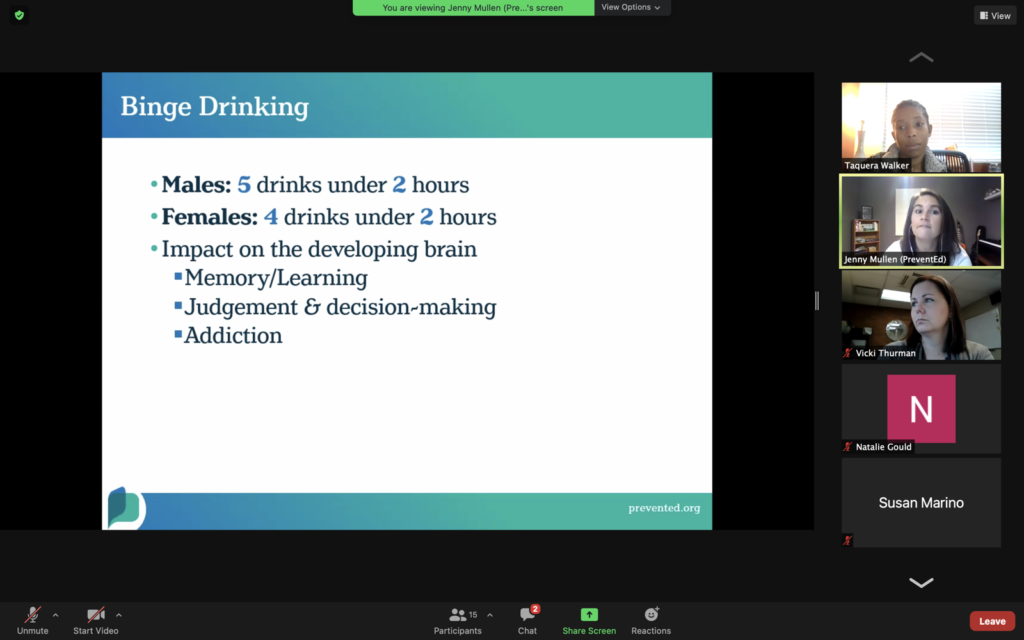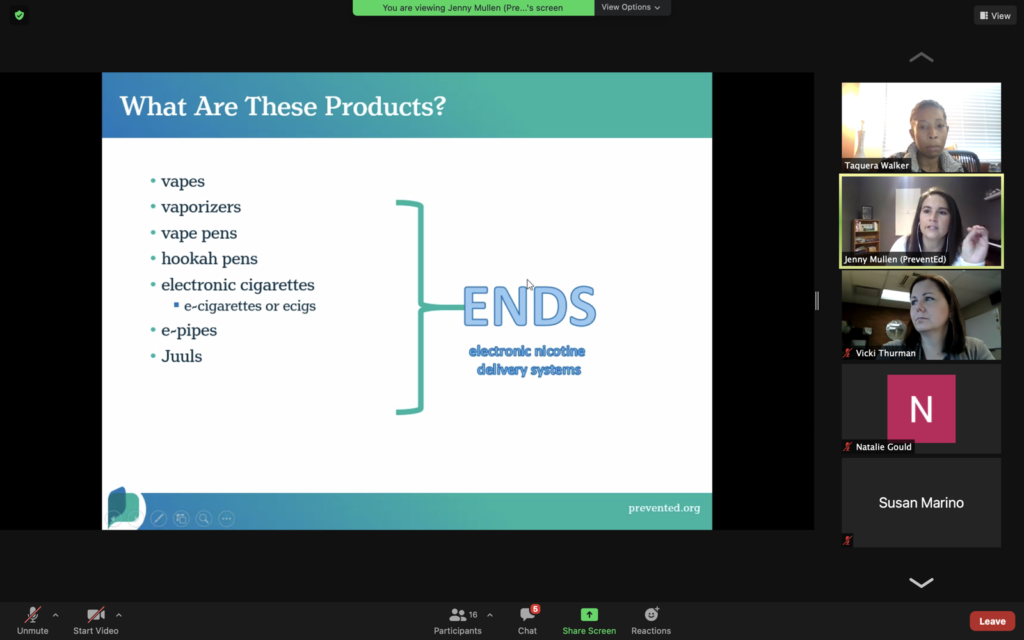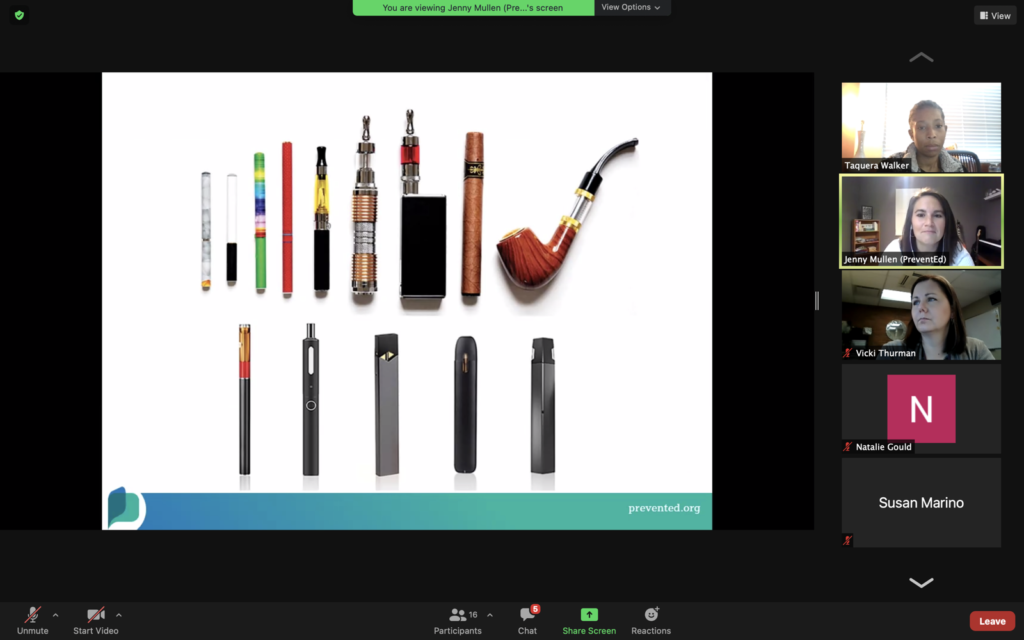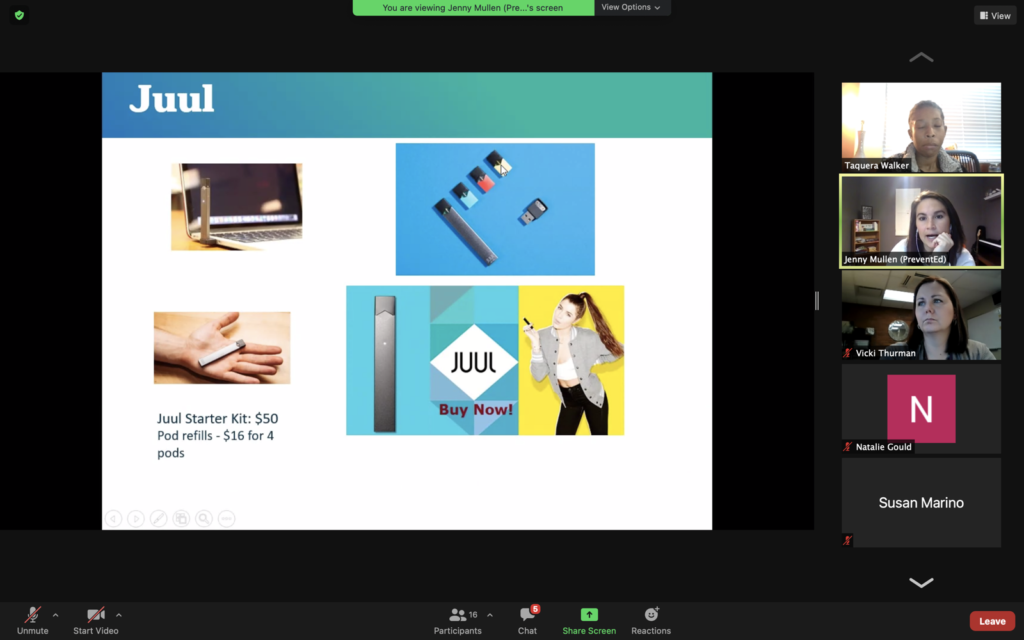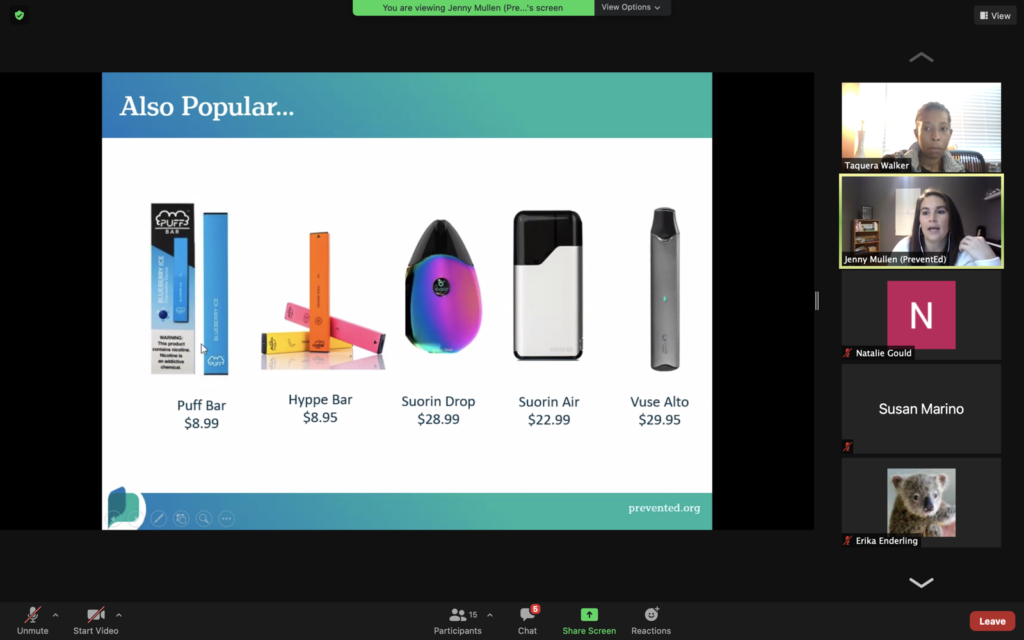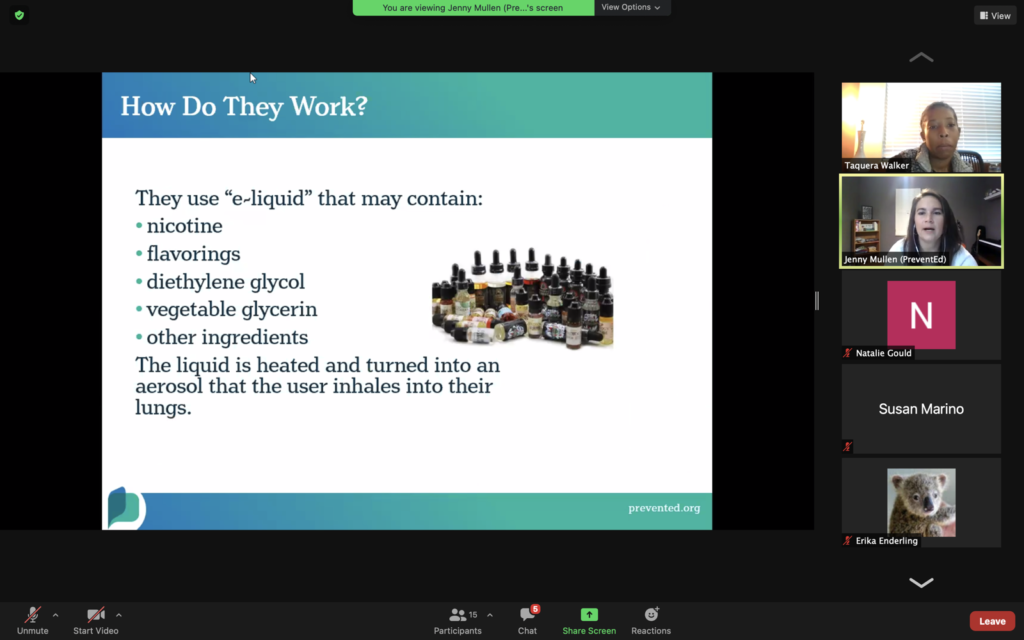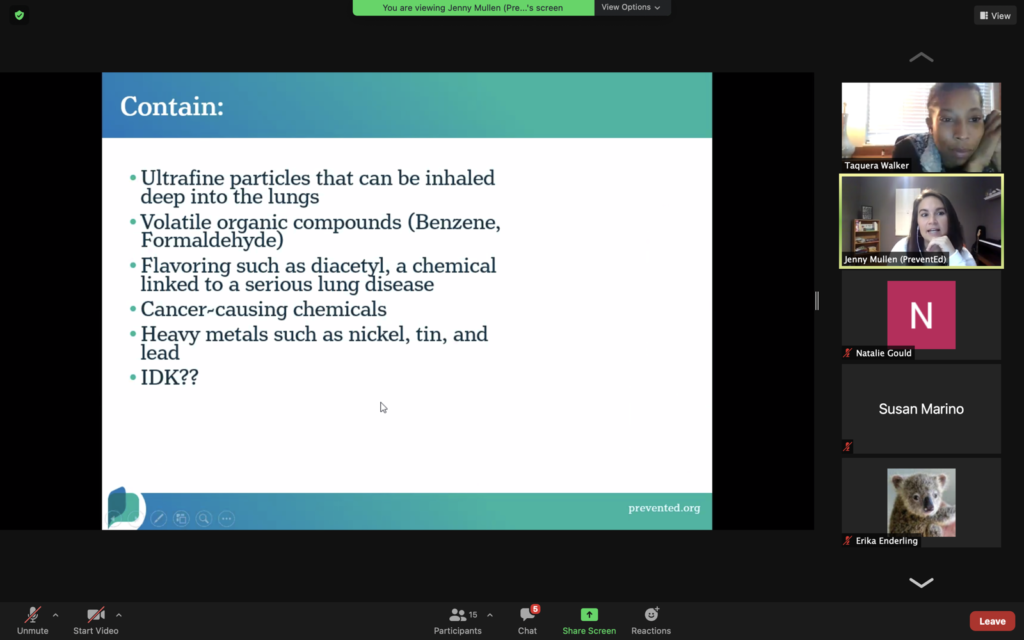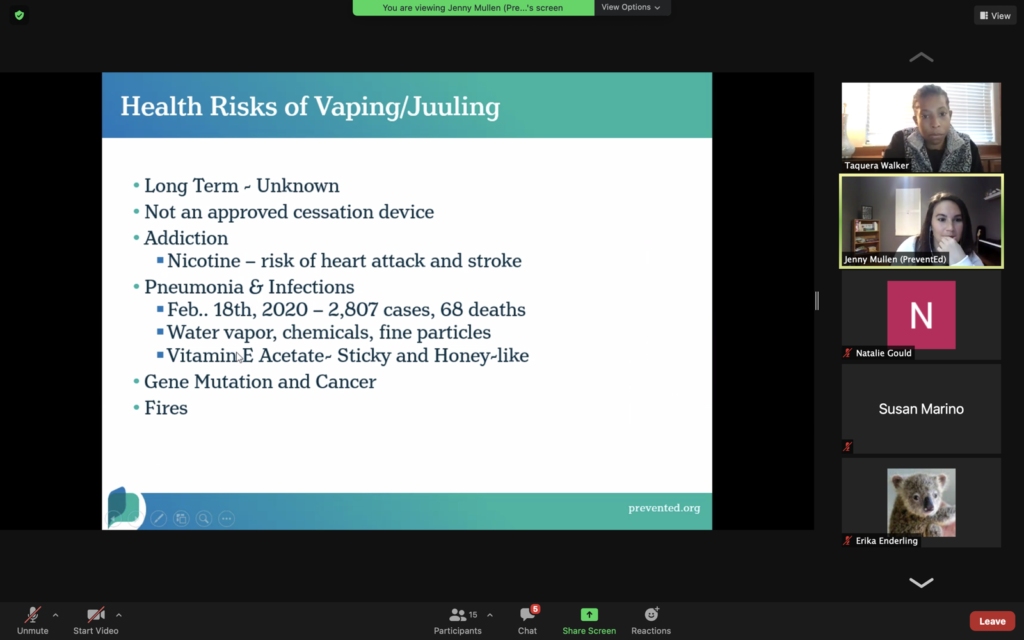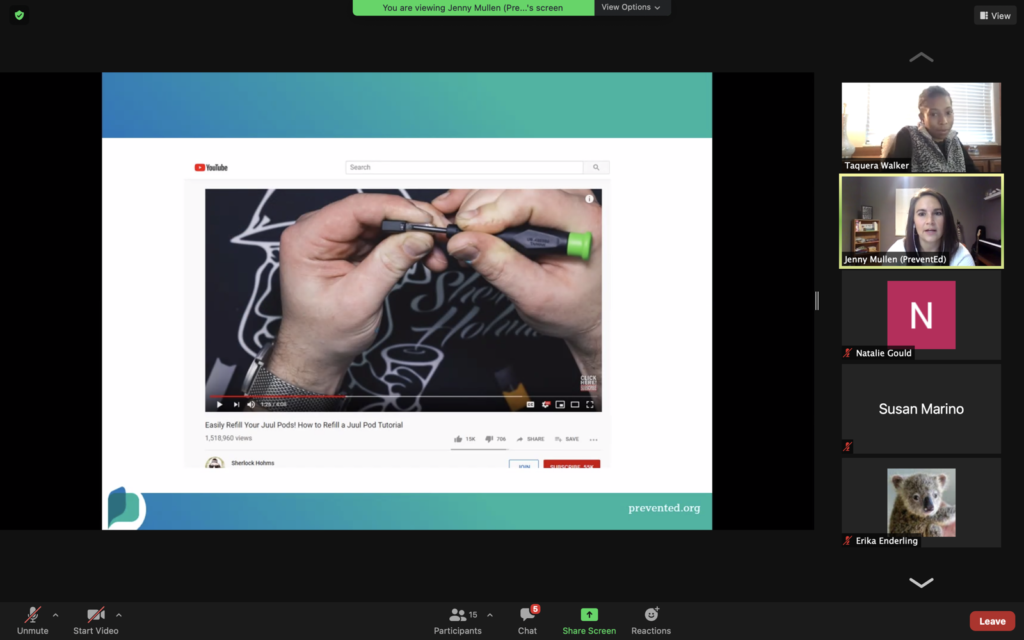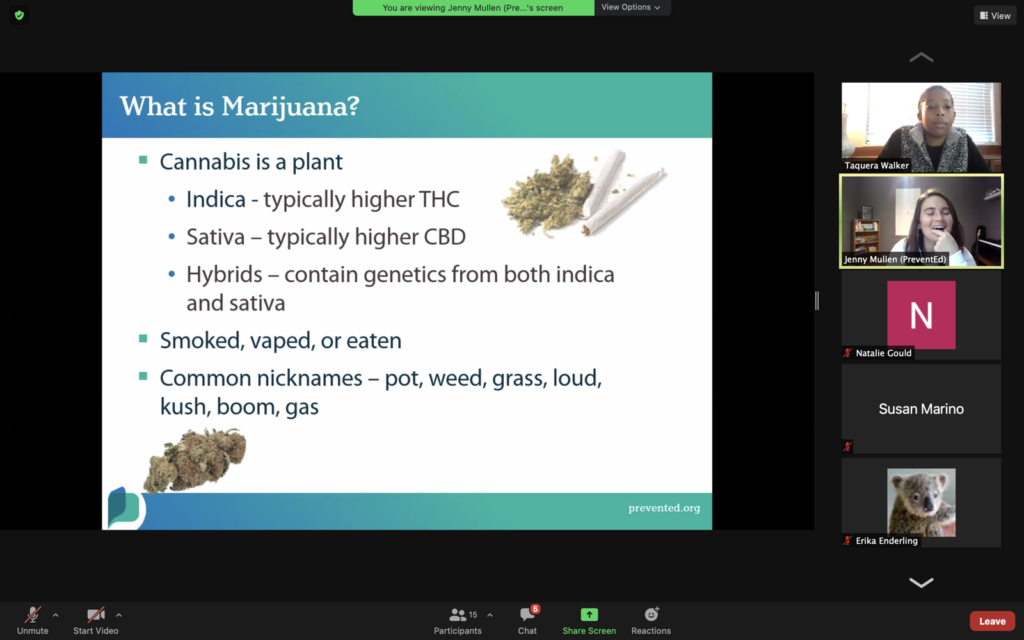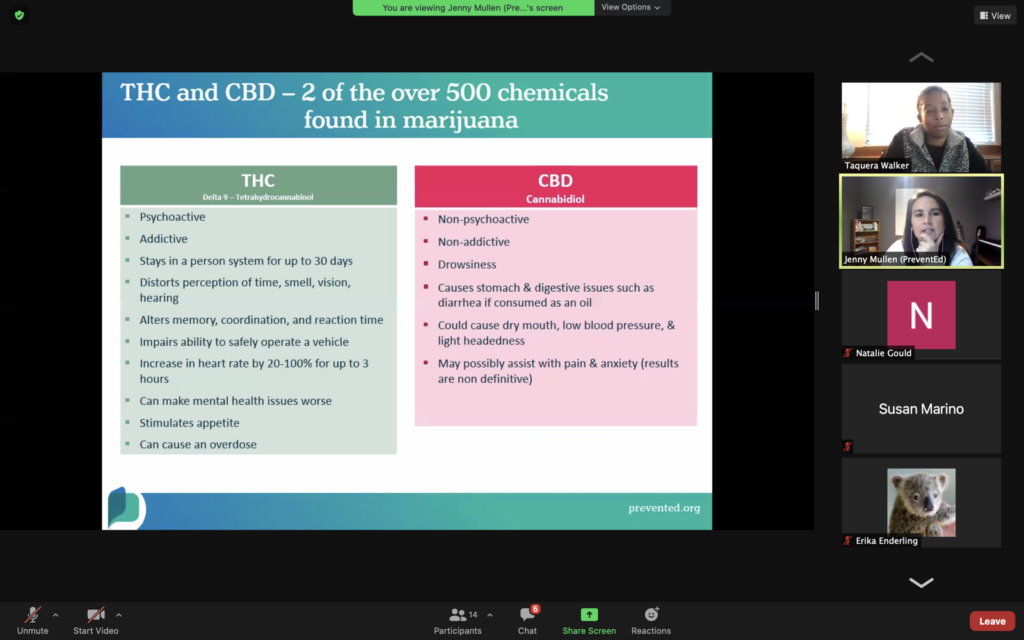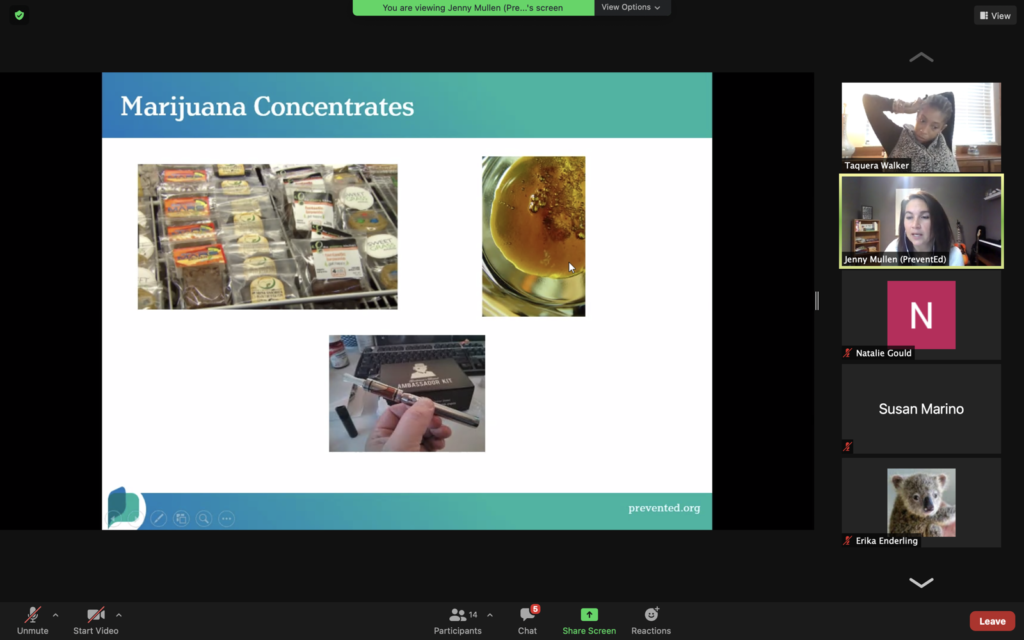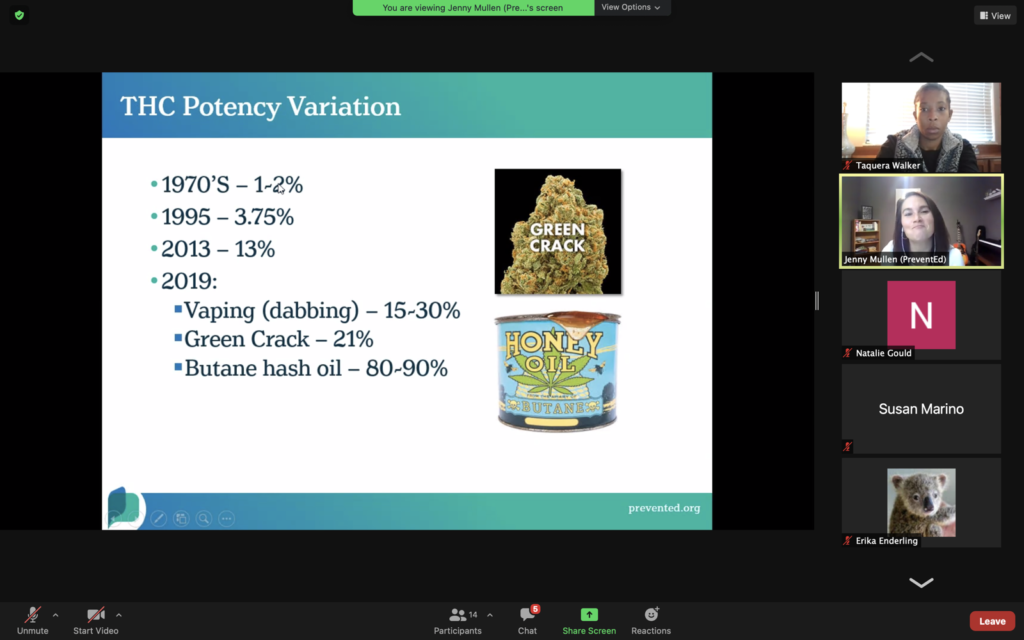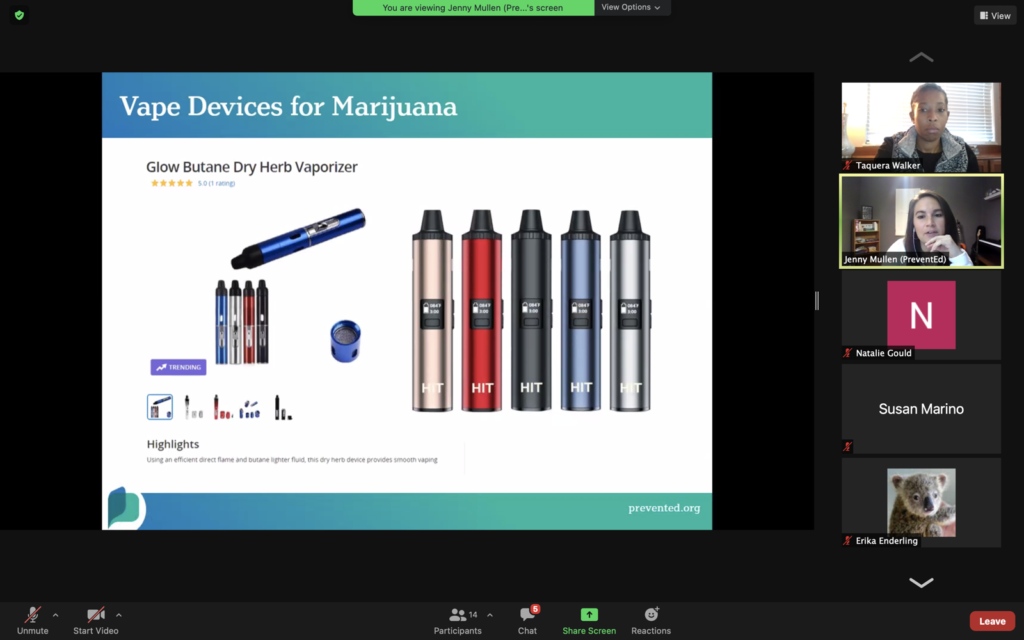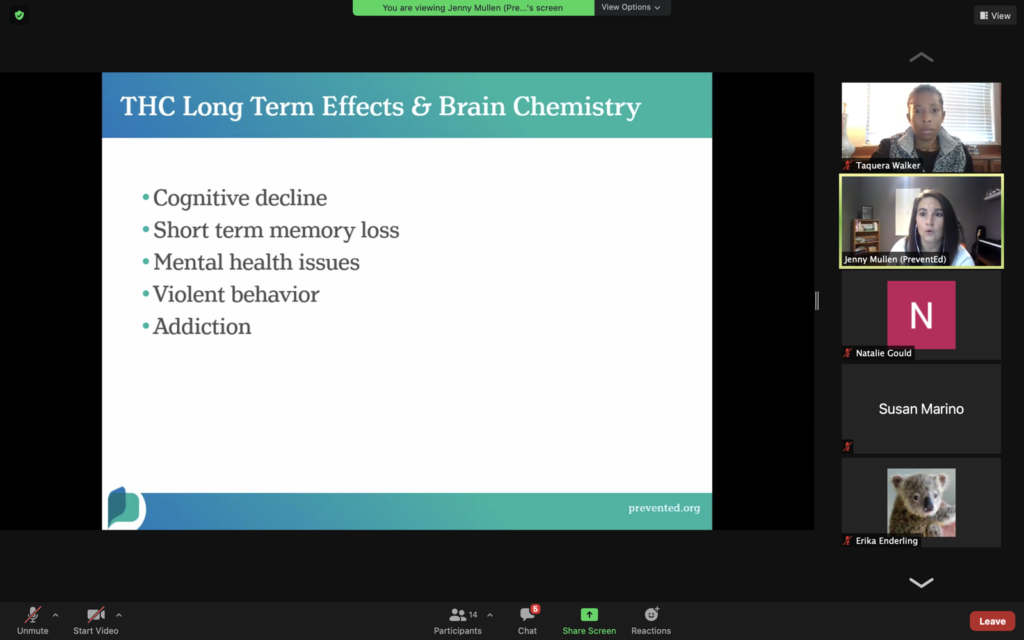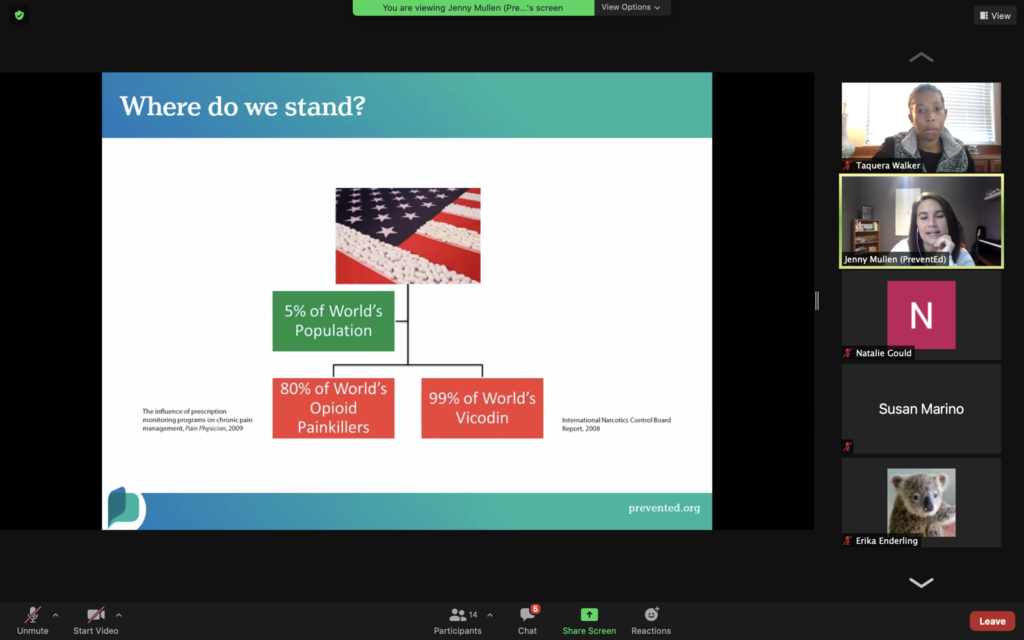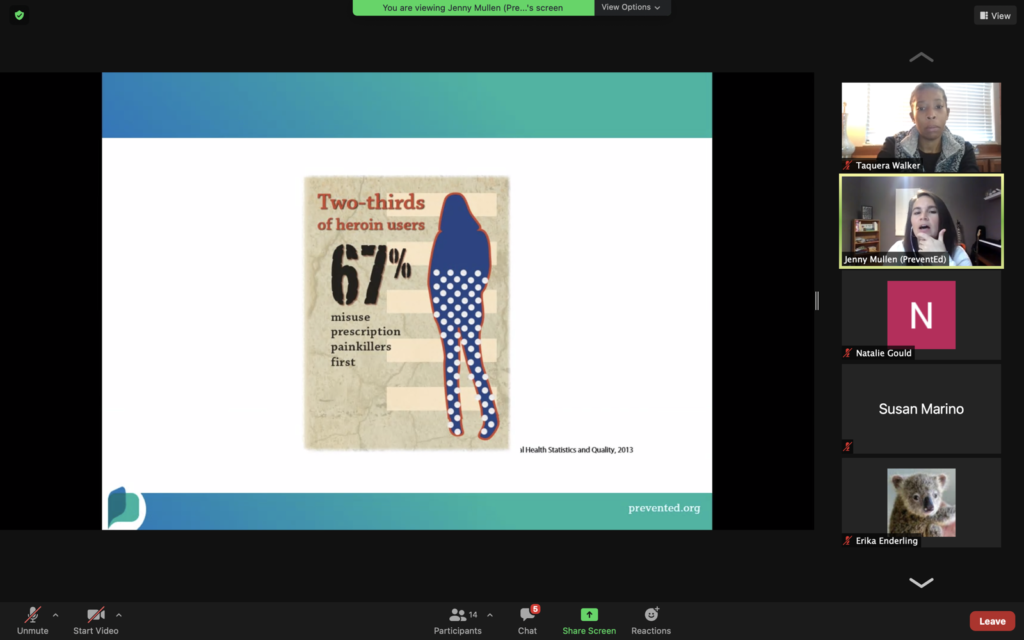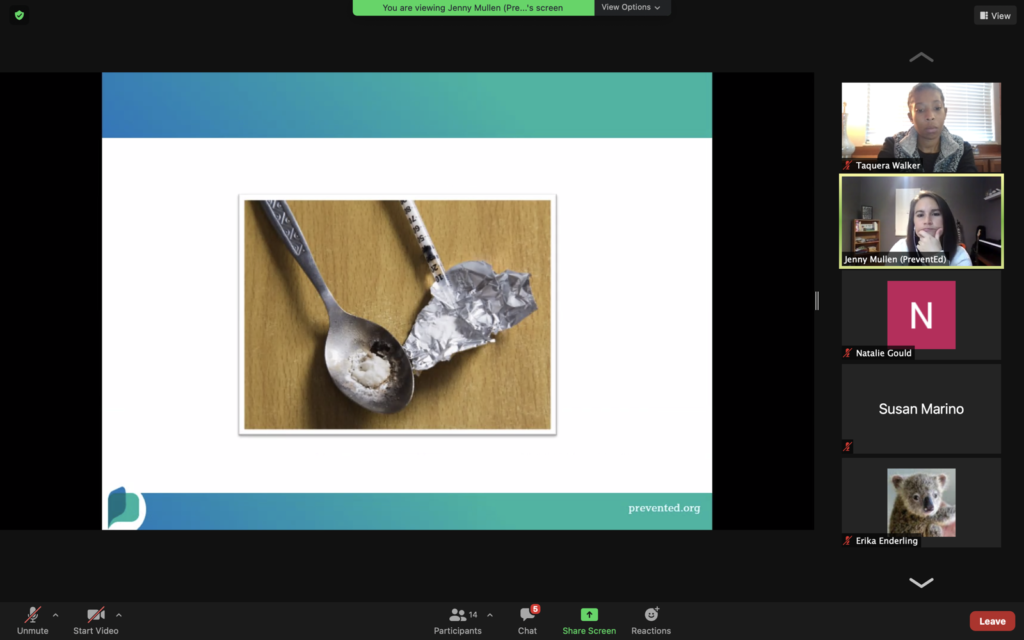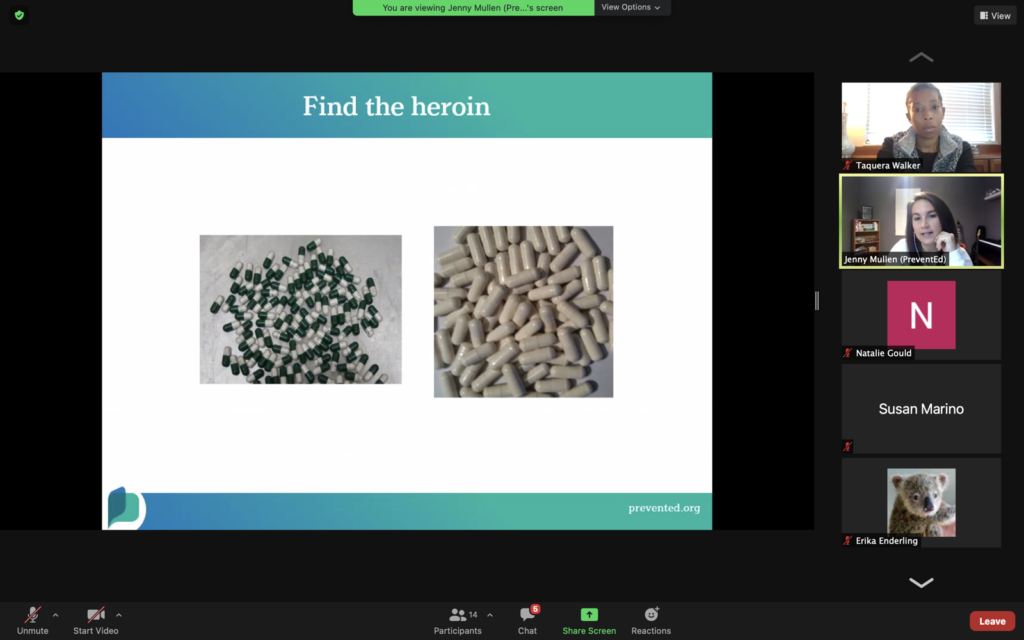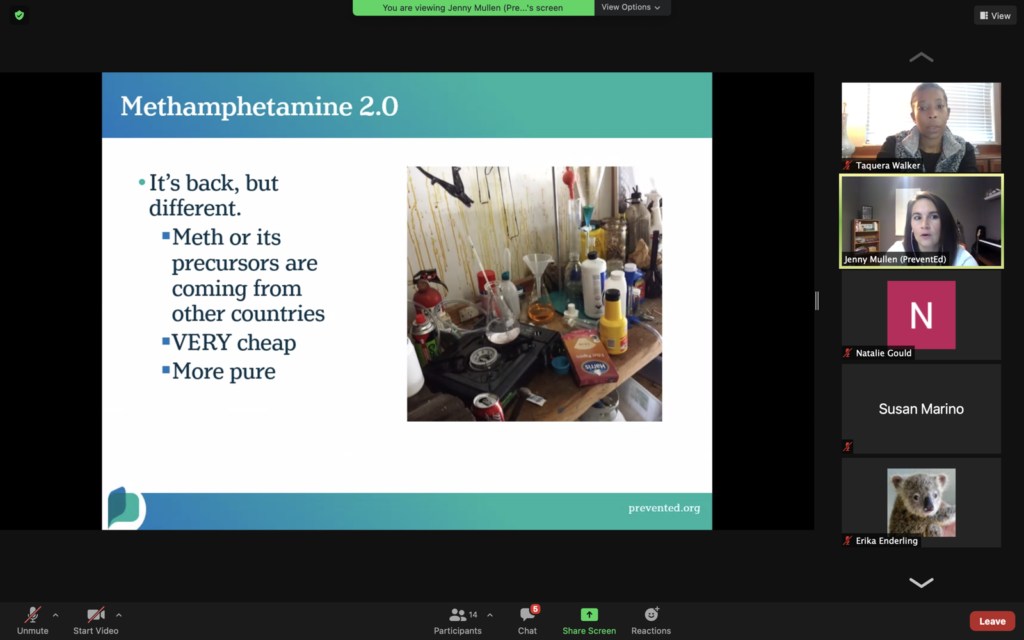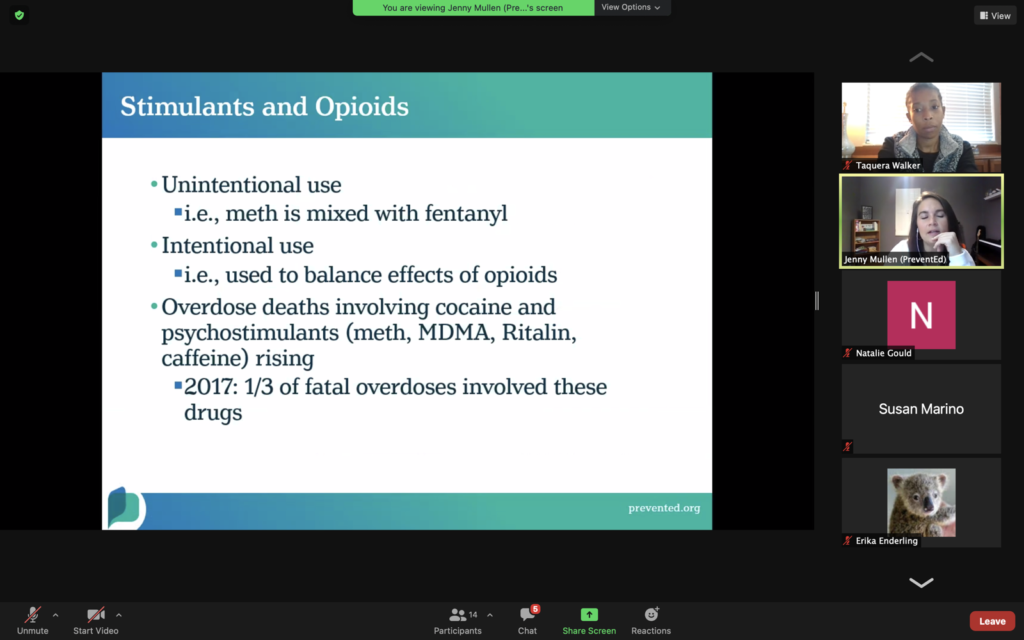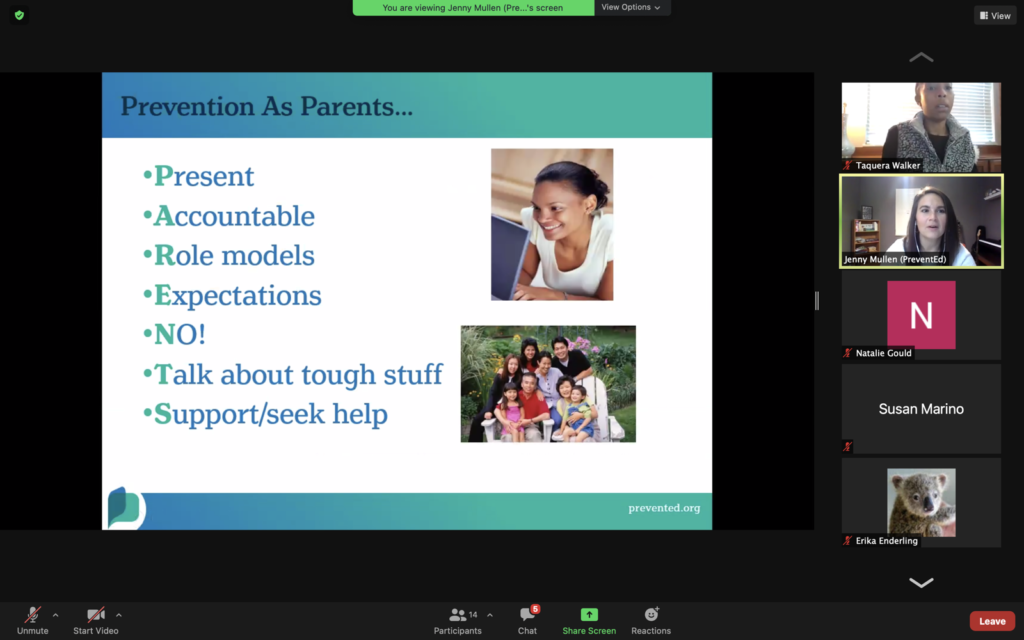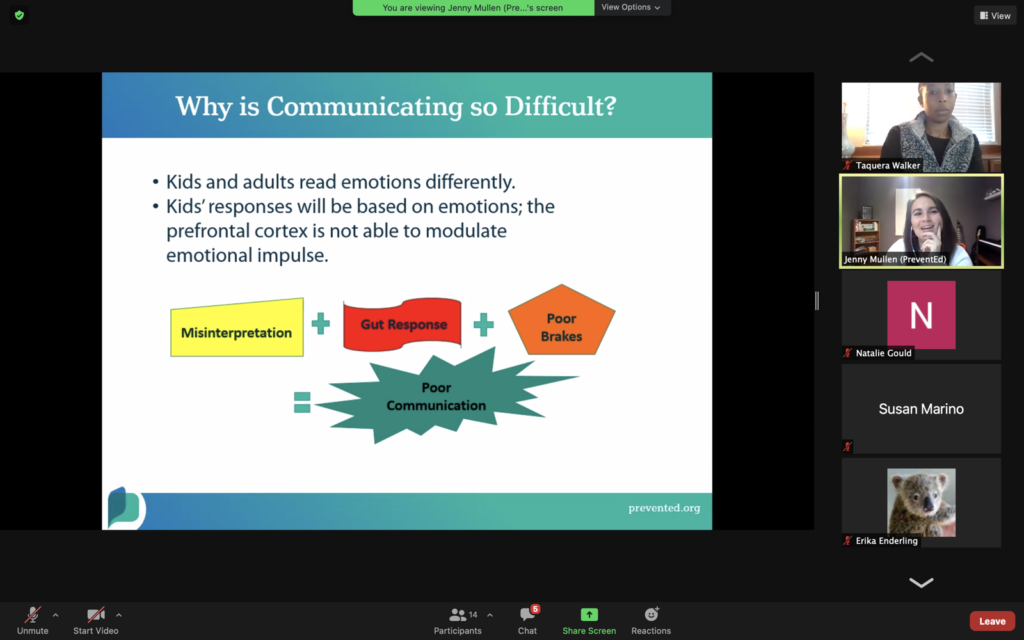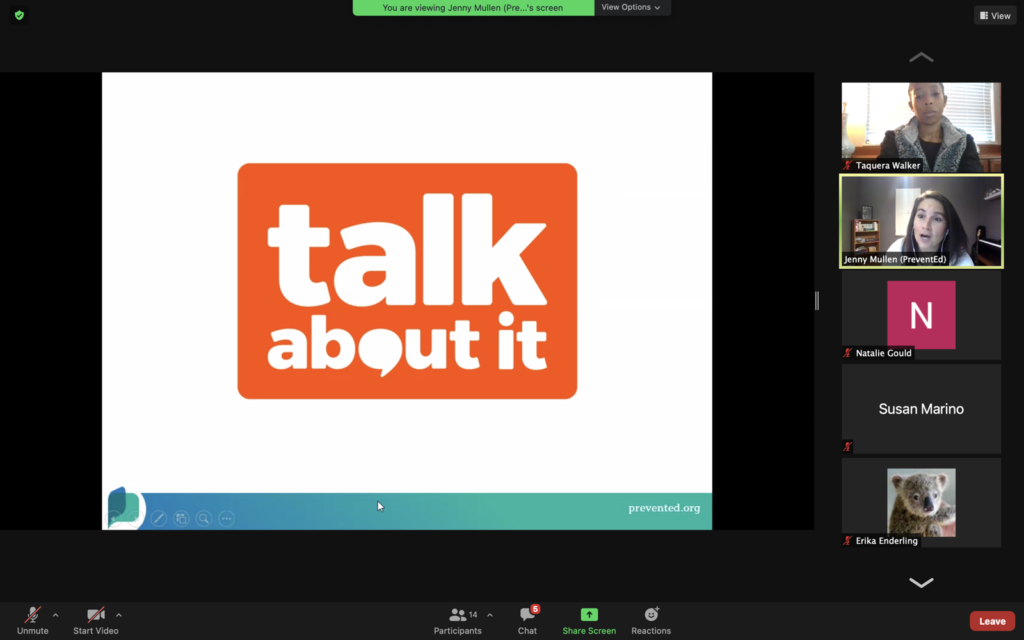Taquera Walker, Middle School Counselor, hosted an informative presentation on teenage drug and alcohol abuse for parents this week. She welcomed Jenny Mullen from Prevent+Ed, the agency formerly known as NCADA. Prevent+Ed teaches drug prevention lessons all over the St. Louis area to students in grades K-12.
Mullen explained that alcohol is the drug of choice and the most used substance among teenagers and adults. It’s the most accessible. E-cigarettes are also popular, although teenage use of vaping devices started trending down when the pandemic hit, perhaps because of lack of accessibility or all the news about the related health issues. She showed some charts that compared alcohol and drug use in St. Louis County teens to data from Missouri and the United States for both 8th grade and 12th grade and pointed out that marijuana and alcohol use jumps significantly as students get older.
Vicki Thurman, Director of Student Support Services, was also on part of the call. She sees that vaping is still accessible to students and lamented that there is so much misinformation available online. She also stressed that vaping is very easy for students to get hooked on. Mullen agreed and said that teenagers today, like adults, are feeling the stress and anxiety of the pandemic and the changes it has wrought, including virtual learning. Mental health issues can drive drug and alcohol use.
In the Upper School, Thurman is hearing more about marijuana use and said that students are more open to talking about marijuana use than before. This could be the prevalence of it through the legalization in neighboring states and even the legalized medical use here in Missouri. “When people think there is no risk to something, they are more likely to use it,” said Mullen. Prescription drugs are also a threat, with painkillers and stimulants (like what can be prescribed for conditions like ADD) among the most commonly misused prescription drugs.
Mullen began with alcohol, and said that often Prevent+Ed begins talks with teens by defining what is a drink? The agency explains that alcohol content varies by drink, and says that one serving of alcohol is how much the liver can process in one hour. For beer, that’s 12 ounces. Wine is 5 ounces and hard liquor is only 1.5 ounces. Mullen said that unfortunately when teenagers are choosing to drink, they aren’t having that one drink per hour. “It’s the binge drinking we are talking about.” What is binge drinking? For males, binge drinking is five drinks in under two hours, and for females, it’s four drinks in under two hours.
What many teen drinkers may not realize is the negative and lasting impact alcohol can have on the developing brain. Researchers have found that human brains are not fully developed until the age of 24 or 25, so alcohol has a different impact on the teenage brain than on the adult brain. Teenage binge drinking on a regular basis has been shown to impact long-term memory and can even physically affect the brain. Mullen said that the hippocampus can be up to a third smaller in the brains of teenage drinkers than in non-drinking teens. Memory and learning are affected, along with judgment and decision making. These are long-term effects that could have lasting impacts into adulthood. Teenagers are also more susceptible to addiction than adults, Mullen said, since the teenage brain is so much more moldable and changeable than the adult brain.
Next, Mullen spoke about vaping and e-cigarettes, sharing some other names and even photos of these nicotine delivery systems. She talked about how Juul was the hot item when it first came out in 2015, and showed how it was designed to look like a flash drive (it actually charges via USB port in computers or with other chargers) and is small enough to be easily concealed in the hand. Juul was designed to be appealing to this younger, technology-driven generation. The company was forced to pull advertisements that used models that looked very young, and eventually was banned from selling flavors that appealed to youth. Where one falls, others pop up, Mullen explained. She showed a variety of vape devices and shared that there are YouTube videos where young people demonstrate how to refill vape pens.
Vaping devices use an “e-liquid” that may contain nicotine, flavorings, and harmful substances like diethylene glycol (commonly found in anti-freeze) and vegetable glycerin. They produce ultrafine particles that can be inhaled deep into the lungs, carrying harsh substances through volatile organic compounds and chemical flavorings. Mullen explained that the substances carry cancer-causing chemicals, including very fine, microscopic metal particles. “One of the biggest risks is that there is so much information we just do not know yet,” she said. “We teach kids that vape devices haven’t been around very long so we don’t know everything they can do long-term.”
The nicotine in vape pens can increase heart rate and blood pressure, and addiction can lead to a higher risk of heart attack and stroke. The vapor has been shown to cause pneumonia and infections, in addition to gene mutation and cancer. Mullen shared that the amount of nicotine in just one Juul pod equals the amount of nicotine in an entire pack of cigarettes.
Marijuana use is nearly as popular as vaping. Mullen covered the basics of marijuana, including types, concentrates, plants, and forms. She warned that smoking, vaping, and eating marijuana is becoming more common, and that edibles look like regular, everyday products like brownies, cookies, gummy bears, and candy. She even covered nicknames, many of which are commonly known, but a new addition is “gas.” Mullen also explained the difference between THC and CBD. THC is a psychoactive drug, which is what makes people high. It stays in the system for 30 days because it binds to the fatty tissue in the body and can cause long-term effects in the teenage brain. It also speeds up heart rate, and depending on how strong it is, it can cause panic in people because of how high their heart rate gets.
CBD is non-psychoactive, non-addictive, and can induce drowsiness. It might be helpful with some medical conditions but there haven’t been enough studies on whether it actually does help. Marijuana concentrate can be an oil or a waxy substance, and the potency of some concentrates can be very high. Mullen said that in the 70s, marijuana potency was around 1-2%, but since then, genetic modification and hybridization have increased potency up to 15-30%. Butane hash oil can be 80-90%.
People are now using vaping devices for marijuana, placing the dried herb in the vaporizer which heats the dried plant and buds and vaporizes that. Liquids are also available. Teenagers think it’s safer, and are attracted to it because it’s easier to conceal as it doesn’t carry an odor as strong as when someone smokes traditional marijuana.
Regular use of marijuana by teens can cause cognitive decline which affects learning and causes memory loss. Marijuana use is also shown to have an impact on mental health, especially if someone already has anxiety or depression. Violent behaviors are also known to happen. Marijuana addiction is more likely with teenagers; one out of every 11 adults gets addicted to marijuana while one out of every six teenagers does.
Mullen then moved on to heroin and other opioids, which are mainly ingested through prescription painkillers. She said opioids have been a problem for a while now and are huge in St. Louis. “We are 5% of the world’s population here in the U.S. but we have 80% of the world’s opioid painkillers and 99% of the world’s Vicodin.”
Often, a person who is using heroin has misused or addicted to prescription painkillers first. They usually don’t start out with heroin. Mullen also explained that most people, when thinking of heroin, picture an injection. That’s not accurate; it’s usually in some sort of pill form and doesn’t even really look like heroin.
Methamphetamines are back, said Mullet, but it’s different now. Meth is not local; it’s coming from other countries. It’s much more potent and pure, and unfortunately, it’s much cheaper than it used to be. Often, it’s mixed with other substances such as stimulants and opioids, making it far more dangerous. Overdose deaths involving cocaine and psychostimulants (such as meth, MDMA, Ritalin, and even caffeine) are rising, and in 2017 a third of fatal overdoses involved these drugs.
What can parents do to help their children? Open conversations early and often are key, said Mullen. She offered an acronym to help parents remember what they can do to help encourage prevention. Parents should be PARENTS:
- Present
- Accountable
- Role Models
- Expectations (must be clear)
- NO! (let them know it’s okay to say)
- Talk about the tough stuff
- Support/seek help, don’t be afraid to reach out. There are a lot of great resources out there, including Prevent+Ed.
Why is communicating with teenagers so hard? Mullen explained that we read emotions differently than a teenager. Adults use the pre-frontal cortex to make decisions. “Ours is already completely there, developed,” she said. “Teens and kids use their amygdala or the emotion center. A good comparison is to think of us like cars. Adults use the brakes and kids use the gas pedal. That’s why a lot of times it’s hard to communicate with teenagers.” She recommends a book by David Walsh, a psychologist who specializes in the teenage brain, called Why Do They Act That Way? It offers helpful insight into teenage behavior.
She also offered the Talk About It website as a great resource with helpful talking kits designed to help parents communicate with children of all ages. “If you can talk about drugs to your kids it cuts their risk of using by 50%,” she said. Mullen also stressed that if your child is using alcohol or drugs, that does not mean you’re a bad parent or they are a bad kid. “There are many reasons why kids use, but those two aren’t them.”
It’s also helpful to realize that for kids, friends are their biggest advocates and whose opinions they value. When there’s a group of students who say vaping is not cool those, are the people they listen to. It’s good to have an understanding of where their circle of influence is. Prevent+Ed teaches students that a good strategy for peer influence is to choose friends wisely. “Think about who you surround yourself with because they have a huge impact on the choices you make,” she said.
Walker also encouraged open, honest conversation between parents and children. “As things become more accessible, and with social media in general, having those conversations even in 5th or 6th grade is helpful. We tend to think kids can’t handle a lot or process the information developmentally, but we as adults can help them process it. It’s important to pre-empt peer pressure,” she said. Mullen agreed and noted that drug use can start as early as 4th and 5th grade.
Thank you to Jenny Mullen of Prevent+Ed and Taquera Walker, Middle School Counselor, for this informative session on alcohol and drug use by children. Have questions or need more info? Please feel free to reach out to Ms. Walker any time.
